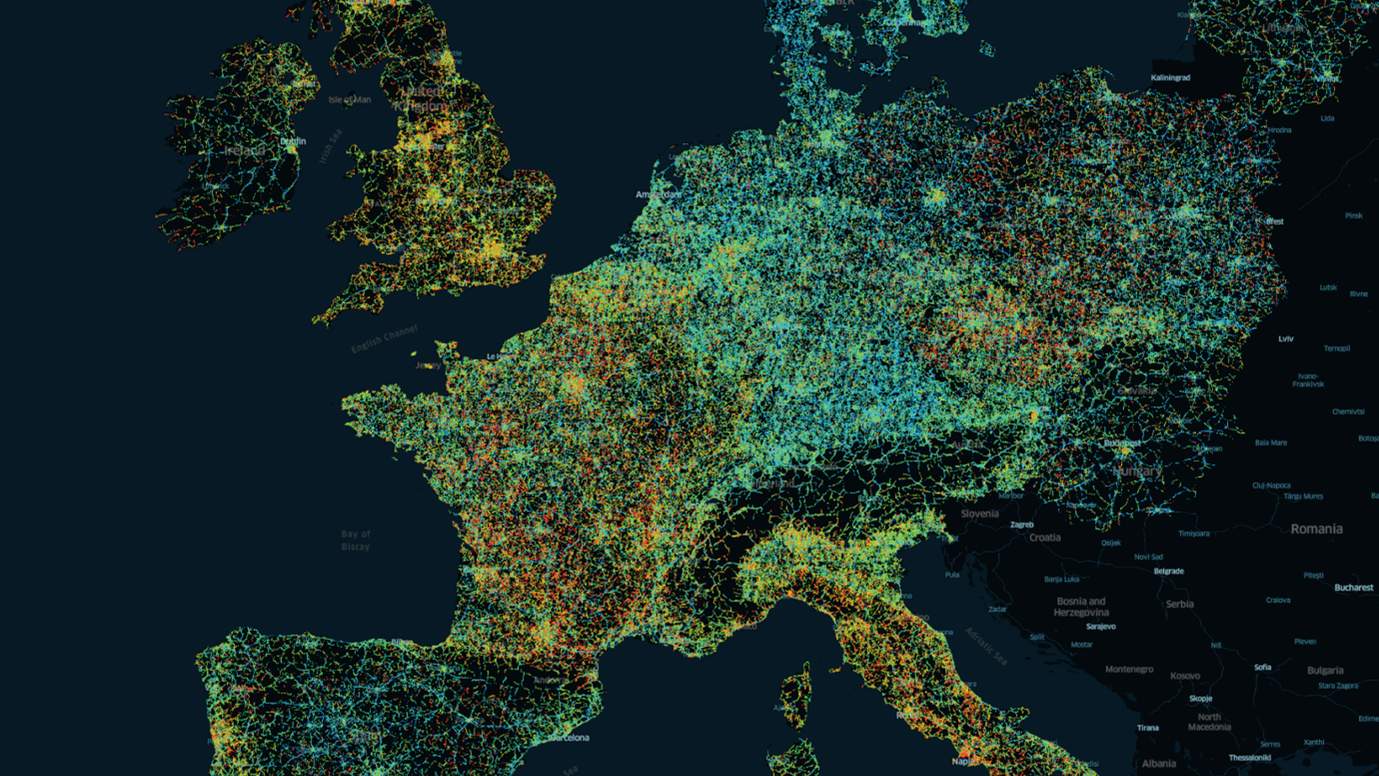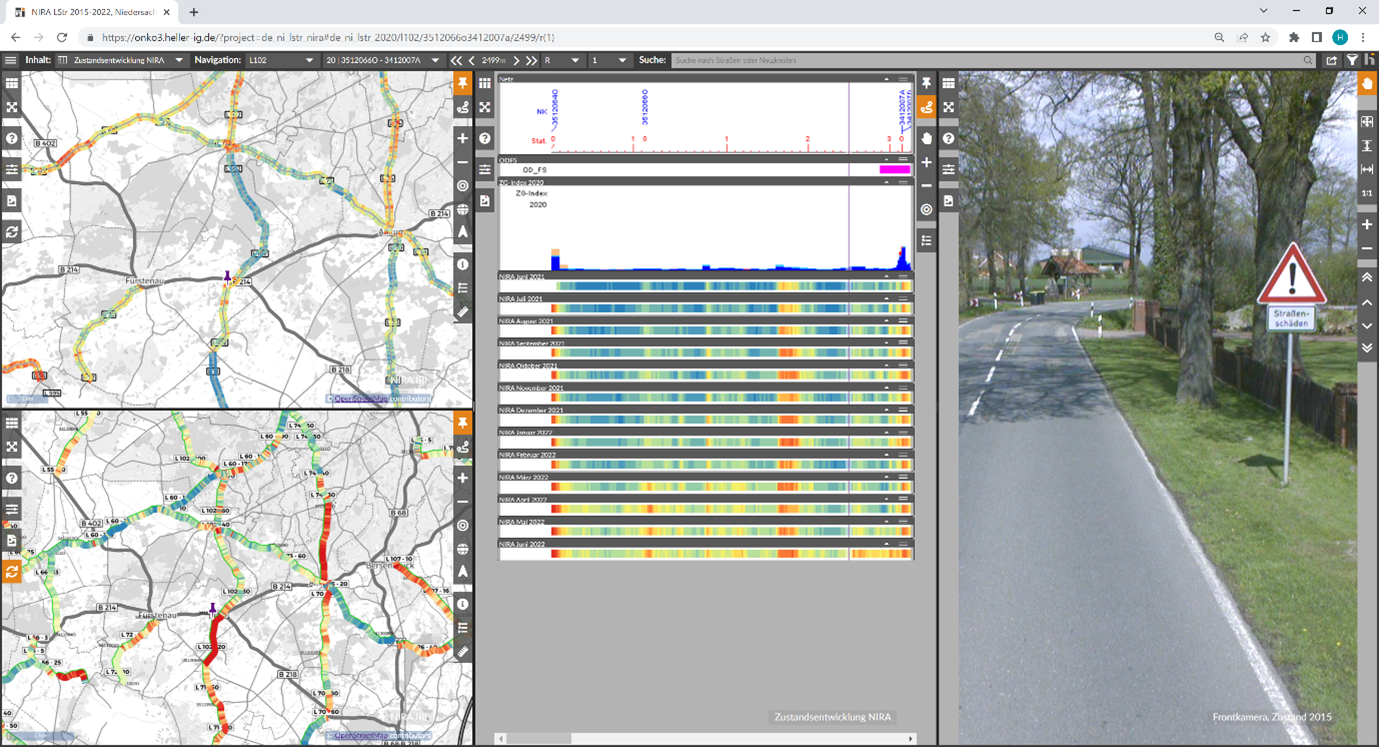Innovation in road condition monitoring - HELLER Ingenieurgesellschaft

Optimized maintenance management through continuous monitoring of road conditions with live vehicle data
At the German Road and Traffic Congress 2022, NIRA Dynamics AB presented a worldwide innovation together with HELLER Ingenieurgesellschaft mbH.
On behalf of the Lower Saxony State Authority for Road Construction and Transport (NLStBV), NIRA Dynamics is currently investigating how continuous monitoring of road conditions with real-time vehicle data from the VW Group can contribute to further improving the maintenance management of state roads.
The Swedish company NIRA Dynamics is a recognized supplier to the automotive industry with strong expertise in sensor data fusion. Among other things, NIRA develops innovative software products that enable road condition assessment by using sensors present in the vehicle. Measurement data is continuously collected while driving, sent in anonymized form to a data cloud and then analyzed.
Darmstadt-based HELLER Ingenieurgesellschaft is a leading European service provider in the field of road maintenance management. The company supports public and private road authorities in recording and assessing the condition of traffic infrastructure, developing suitable maintenance strategies, and planning and prioritizing maintenance measures.
With the software modules installed in series-production vehicles of the Volkswagen Group (VW, Audi, Seat and Skoda), NIRA has already been recording and assessing road conditions in many European countries since the beginning of 2021. In Germany, the data is available nationwide and with a high update rate.

Presentation of the condition development of the state roads in Lower Saxony in the information system OnKo3 by HELLER
The available information on the NIRA Road Health platform represents an important supplement to the standardized road condition monitoring and assessment (ZEB), which is commissioned every five years for cost reasons. Five years is a very long time, meaning the road situation can change a great deal between each scan.
With the new continuous data offering, sections that have poor ride comfort as a result of unevenness can be identified on a daily basis. With the daily updated data offer, it is also possible to describe and display the development of the pavement evenness. In addition, occurring damage events such as potholes, subsidence, etc. can be identified and taken into account accordingly in operational maintenance. The combination of this information with the results of the German road condition monitoring and assessment offers the possibility of planning and prioritizing maintenance measures in a more targeted manner.
The cloud systems of NIRA and HELLER have been linked so that the new data can be optimally used together with the other relevant data on road infrastructure within the framework of maintenance management. This means that the road condition data prepared by NIRA can be visualized for the first time together with the ZEB data with the administration’s network reference and used with the special modules developed by HELLER for systematic maintenance planning for the analysis, definition and prioritization of measure areas.
The new data and procedures are currently being investigated as part of an ongoing pilot project for the Lower Saxony State Authority for Road Construction and Transport (NLStBV). The authority can access the current and historical data of the 8,000 km network of state roads provided by NIRA via the existing information system OnKo3 provided by HELLER and evaluate them together with the results of the German road condition monitoring and assessment. Of particular interest are the new options for displaying condition trends. The state authority expects the new approach to enable it to identify changes in the overall network earlier and respond in a more targeted manner in the future.
The new data will also be used to investigate the influence of climatic changes on pavement damage. For example, the prolonged heat waves with dry periods and the associated lowering of groundwater levels in recent years have increasingly led to so-called dry damage to road surfaces.


